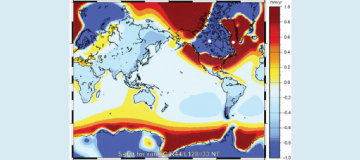
Secular sea-level rise: the role of solid Earth
Speaker: Prof. Giorgio Spada (Dipartimento di Fisica e Astronomia - Università di Bologna) - Tuesday, 15th March – 4:30 PM | Aula Arduino
15.03.2022
It is well established that the sea-level variations due to the melting of continental ice sheets are characterized by strongly non-uniform spatial and temporal patterns. To a large extent, these result from Glacial Isostatic Adjustment (GIA), a physical process caused by the global and the regional scale interactions between the cryosphere and the oceans, tightly related with the solid Earth response to surface loading and unloading. The GIA effects can be predicted by solving the so-called “Sea level Equation” but they cannot be disentangled from other components of contemporary sea-level change. The regional impact of GIA on currently observed geodetic variations can be described in terms of “fingerprints”, or spatial patterns that describe the response of the Earth to GIA. These are contaminating all the geodetically observable signals, including the sea-level observations from tide gauges deployed along the coastlines and those detected from altimetry during the last two decades. My focus will be on the causes of the regional imprint of GIA, with examples from key-areas of the world that are currently subject to significant isostatic disequilibrium and sea-level variations. The problem of uncertainties in GIA modeling, especially those associated with the response of the solid Earth will be also discussed.





